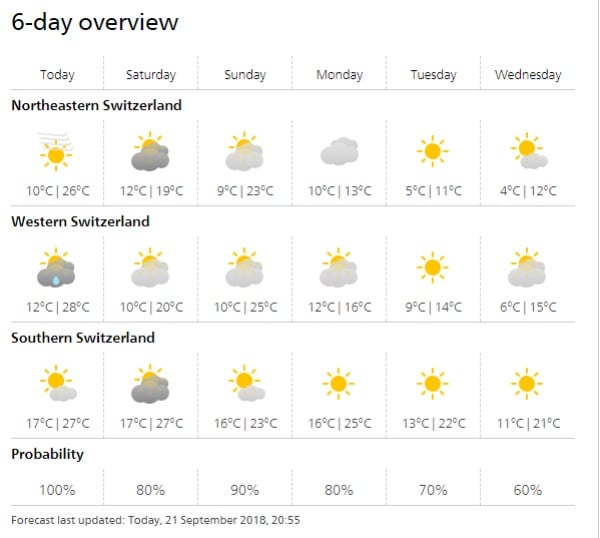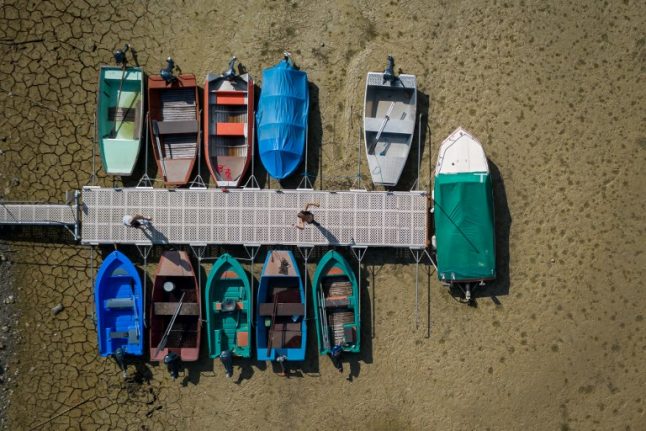The summer of 2018 is the gift that keeps on giving.
On Friday, temperatures in Chur, the capital of Graubüden, hit the magic 30-degree mark, which indicates a 'hot' day for meteorologists.
Read also: IN PICTURES – 12 photos that will get you excited about autumn in Switzerland
That is the latest date this has ever happened in the part of Switzerland that lies north of the Alps and two days later than the previous record for northern Switzerland set in 1947 when 30C was seen on September 19th.
South of the Alps, the latest ever ‘hot’ day ever was on September 25th in 1983.
But the forecast for coming days suggests autumn may finally be on the way with distinctly cooler temperatures coming up for much of the country, especially from Monday on.

Image: MeteoSuisse
The new season will likely come as a shock after five months in a row of warmer than usual weather.
August 2018 was the third warmest on record but a long way short of the hot temperatures seen in the legendary ‘once-in-a-century’ summer of 2018.
But while the good weather has been welcomed by many, it has also led to drought conditions in certain areas.
There has also been a high number of drownings while experts fear 2018 could see a new record for the number of deaths in the Swiss mountains after the good conditions saw more people heading to the Alps.




 Please whitelist us to continue reading.
Please whitelist us to continue reading.